William Laud, 1573-1645, was Archbishop of Canterbury during the reign of King Charles I of England and regarded by many as an Anglican martyr. Appointed as Archbishop in 1633, Laud shared Charles I’s “high church” views of church governance by bishops and uniformity of worship according to the Book of Common Prayer. This was in sharp contrast to the Puritan factions in the Church of England at the time who took a more Calvinistic approach to worship and a Presbyterian form of government.
Note that “high church” at the time meant a high view of governance, such as bishops. It didn’t mean the “high church” that we equate today with a more Anglo-Catholic form of worship, namely incense, bells, chanting, and other liturgical elements. Laud did, however, bring back altars and communion rails after Puritan-leaning clergy removed them from their churches and demanded that clergy use the Book of Common Prayer for all worship services.
Laud thought that Puritanism was a threat to the episcopacy and to the Church as a whole and pursued Puritans in the infamous Star Chamber, where self-incrimination could be compelled and torture was frequently used. Those who were convicted of the crime of Sedition and Libel had their nose or an ear cut off and had “SL” branded on their cheek, for “Sedition and Libel.” Under Laud’s tenure the SL became known as the “Sign of Laud.”
To say that Laud was unpopular was an understatement. A popular saying at the tim e was, “Give great praise to the Lord and little Laud to the Devil.” Finally in 1640 the Puritan forces in Parliament had him arrested. He was imprisoned for four years and finally tried, not by a court, but by Parliament (Charles I had control of the courts and the outcome would not have been satisfactory to his opponents.) A famous etching of the trial is reproduced below along with the quote from Proverbs, “The righteous are delivered from trouble and the wicked get into it instead.”
(Prov. 11:8) Laud was convicted by a bill of attainder by Parliament instead of a jury.
Laud was executed on Tower Hill on January 10, 1645. Laud preached his own funeral sermon on the scaffold, prefacing his comments with the observation that “this is an uncomfortable time to preach.”
His benefactor, Charles I, would, of course, meet the same end in 1649. Laud’s views of the episcopacy and other high church principles survived after the Restoration, and other Anglican divines known as “Laudians”, carried on his work for future generations of Anglicans.
The Reverend Lucius Waterman in 1912 summed up Laud’s contribution best when he observed that:
That we have our Prayer Book, our Altar, even our Episcopacy itself, we may, humanly speaking, thank Laud …… That our Articles have not a Genevan sense tied to them and are not an intolerable burden to the Church, is due to Laud. ….. . Laud saved the English Church …… The English Church in her Catholic aspect is a memorial to Laud.” (from here)
He continues, quoting Gladstone:
Laud as a Churchman has lasted. He lives to-day. His opponents have mostly disappeared from off the earth. They have left consequences, but no representatives. Laud has both.
From the 1979 BCP:
Keep us, O Lord, constant in faith and zealous in witness, that, like your servant William Laud, we may live in your fear, die in your favor, and rest in your peace; for the sake of Jesus Christ your Son our Lord, who lives and reigns with you and the Holy Spirit, one God, for ever and ever. Amen
In Part I we set the stage for the beginnings of the English Reformation. Now its time to look at what the religious climate was in England immediately before the breach with Rome and the beginnings of the Church of England.
The Roman Catholic Church in early 16th century England was very much like the Catholic Church in the remainder of Europe. Mass was said in Latin, the Bible was not available to lay people, priests did not marry and a person could receive forgiveness of sins by the purchase of indulgences from the Church. Masses were said for the dead to allow them to escape purgatory and priests were paid from the estate of the deceased to say Mass regularly on their behalf.
The Reformation on the continent did not go unnoticed in England, however. As the laity began to become more educated, reforming ideas from Europe became to be regularly discussed in England as well. The printing press proved to be a major catalyst in the Reformation, both in England and the continent, especially considering that you didn’t need to know Latin or Greek, or be a university scholar or in Holy Orders, to be able to read and discuss religious issues.
By 1521 Lutheran books were coming into England and people were discussing religious issues. Luther, a German monk and New Testament scholar, challenged the Roman Catholic Church’s views on salvation, indulgences, and the Roman Catholic doctrine of transubstantiation, which holds that the bread and wine consecrated by the priest during Mass actually becomes the physical body and blood of Christ.
The reaction to this by the English Church and the Crown was swift. Bishop John Fisher, along with other English bishops, led the charge against Luther’s works and a ceremonial burning of Luther’s works was held at St. Paul’s Cathedral in London in 1521.
Other notable English clergy were involved in discussing Luther’s ideas, including a group of Cambridge scholars many of whom would become first generation English reformers (and martyrs) including William Tyndale, Thomas Parker, Hugh Latimer, Thomas Cranmer, and Nicholas Ridley.
William Tyndale, a committed reformer, translated the Bible into English. Fearing for his safety he traveled to Germany and met Luther. He translation of the New Testament appeared in England in the late 1520’s, and he produced other writings that discussed the supremacy of Scripture over everything else. He was eventually tracked down by English agents in Brussels, and in 1536 condemned to death for heresy. He was strangled to death and then burned on the stake, as depicted below in Foxe’s Book of Martyrs, which chronicled the martyrs of the English Reformation. Tyndale’s final words were, “Lord, open the King of England’s eyes.”
Henry VIII’s response to Lutheran ideas was similar to that of the bishops. Henry wrote a response to Luther, opposing Lutheran doctrine and for the supremacy of the Pope. For his efforts, he was rewarded with the title of “Defender of the Faith” by the Pope, a title that English monarchs carry to this day.
If Luther’s ideas gave some in England reason for thought, the actions of the English clergy gave rise to strong feelings of anti-clericalism. The poster child for anticlericalism at the time was Henry’s chancellor, Cardinal Wolsey. Wolsey was held multiple titles including Cardinal, Archbishop of York, and a number of other bishoprics, which was not uncommon at the time. Fabulously wealthy, he built Hampton Court Palace (which he would later give to Henry VIII in a desperate attempt to save himself from being charged with treason-it didn’t work), and endowed a college at Oxford. Like many of the clergy at the time he had a mistress and several illegitimate children
Wolsey, who arose from humble beginnings, was given significant power by Henry VIII for handling the day to day business of the monarchy. Wolsey also arranged to be appointed a papal legate, which meant he acted in the name of the Pope in England. His significant power and wealth caused resentment among other bishops and members of Henry’s court, so much that once he failed to please the King, his downfall was assured.
That downfall stemmed from Henry’s attempts to get an annulment from his marriage to Catherine of Aragon. Remember that by 1525 Catherine had failed to produce a male heir for Henry and Henry’s attentions were focused on Anne Boleyn. Wolsey tried to intervene on Henry’s behalf with Pope Clement to grant an annulment, but Clement would not overrule the dispensation that had been given to Henry by then-Pope Julius. Clement’s refusal to grant an annulment was undoubtedly influenced by the fact that Catherine of Aragon’s uncle was Charles V, Holy Roman Emperor, who actually attacked Rome in 1527 and kept Pope Clement VII under house arrest for a while.
By 1527 Henry had decided to marry Anne and began annulment proceedings. Clement sent another cardinal and papal legate, Cardinal Campeggio, who presided with Wolsey inannulment hearings inn England in 1528. Unfortunately, for Wolsey, Henry did not get the result he wanted, an annulment, and the case was remanded to Rome for a decision by the Pope. Given the situation with Charles V, it was obvious that the result was not going to be good for Henry.
Wolsey’s standing with Henry was significantly diminished after the case was sent back to Rome, especially after Anne and her supporters (who were pro-Reformation) at Court convinced Henry that Wolsey was putting the interests of the Church over Henry’s. Wolsey was deprived of the Chancellor’s office and forced to return to being Archbishop of York, the second-ranking primate in England (the Archbishop of Canterbury is first), and actually had to go to York, where he had never been before, although he was Archbishop (the requirement for Bishops to reside in their seas was one product of the Reformation). However this wasn’t enough for the anticlerical Reform-minded activists at Court, and Wolsey was eventually was charged with treason. He was charged under an ancient common law principle that it was illegal to serve another monarch (the Pope) at the expense of the King, and brought to Court under a writ of praemunire. Apparently, all of Wolsey’s actions as papal legate were illegal! Who knew?
Wolsey died in 1530 enroute to the Tower of London of natural causes and never faced the executioner. His final words included, “If I had served God as diligently as I have done the King, he would not have given me over in my grey hairs.”
At Court, Wolsey was gone and there was a strong reforming influence led by Anne and her supporters. Henry was determined to get his marriage to Catherine overturned, however, and began to take steps to assume more control of the English church. While Reforming principles were on the minds of many at Court, Henry remained a fairly content Catholic in matters of doctrine.
So, perhaps, maybe it was really all about Anne. In Henry’s mind it probably was. In the next post, we’ll examine the actual breach with Rome and learn about the key players involved, most of whom were committed reformers, and how they used the breach as an opportunity to bring reforming principles to England.
We Anglicans know the abbreviated version. How many times have we heard in casual conversation, Christian education programs, or elsewhere the short version of how Anglicanism came into being. It goes something like this “Henry VIII wanted a divorce from his wife so he could marry Anne Boleyn and when the Pope wouldn’t give him one he started the Church of England.” Remember that the final result, the separation of the English church from Rome wasn’t remotely “Anglican” in the sense we know it today. It wasn’t even the Church of England. That would come much later.
While Henry’s marital woes being the cause of the breach with Rome does have some truth to it, there’s a lot more to the story than just an expedient way to get a new Queen. In the next few posts we’re going to take a look at what led up to the separation between England and the Catholic Church, the influence of the Reformation on the Continent, the various players involved, and a whole lot more information about how the English Church came about.
Events of the Early 16th Century: Henry VII, Prince Arthur, Catherine and the Pope
Henry VIII became king with his father, Henry VII, died in 1509, at the age of eighteen. Henry VII won the throne in the War of the Roses in 1485. His successor was to be his eldest son, Arthur, however Arthur died in 1502. Arthur was married to Catherine of Aragon, daughter of Ferdinand and Isabella of Spain. The marriage was arranged to forge an alliance between England and Spain. In order to preserve the alliance, Henry VIII married Catherine of Aragon. Before Henry could marry Catherine a dispensation had to be obtained from the Pope, Julius II, which was done in 1503.
The dispensation itself is important as it would become the basis of Henry’s argument for an annulment of his marriage to Catherine. Julius II granted the dispensation on the grounds that Arthur and Catherine had only been married for a short period of time, three months, and that the marriage was never consummated. If this appears to be shaky ground, remember that the Vatican at the time derived a significant income stream from high level dispensations such as this and international politics played a significant role in this as well.
Henry and Catherine were married in 1509, shortly after Henry’s accession to the throne. She and Henry had six children, but only one, Mary Tudor, later Queen Mary of England, would survive to adulthood.
The lack of a male heir worried Henry, and, once again, this would become part of his case for an annulment of his marriage to Catherine. In years to come, Henry would rely on two verses of Leviticus for the Scriptural basis of his annulment namely, “thou shalt not uncover the nakedness of thy brother’s wife: it [is] thy brother’s nakedness,” (Lev 18:16) and “And if a man shall take his brother’s wife, it [is] an unclean thing: he hath uncovered his brother’s nakedness; they shall be childless.” (Lev. 20:21, both KJV)
So now the stage is set. We have Henry VIII, concerned about a male heir, and Catherine of Aragon, a devout Roman Catholic who cannot produce one, who also happens to be five years older than the King. These are only two of the players in the story. The next area to explore in early sixteenth century England is what was happening in the English church at the time, and see why it was fertile ground for a reformation, although that wasn’t exactly what Henry had in mind.
The English Reformation continues here on the blog. See Part II

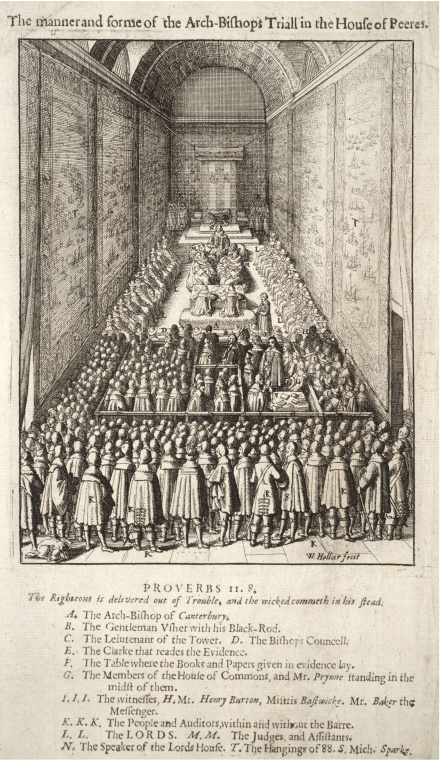

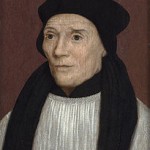
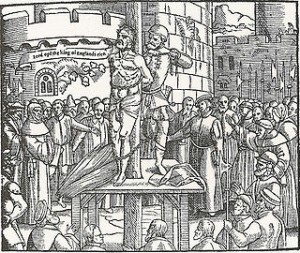
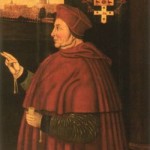
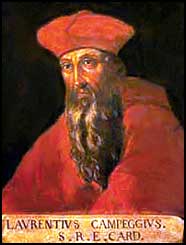
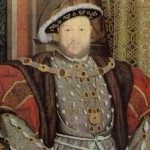
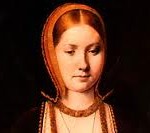


Recent Comments